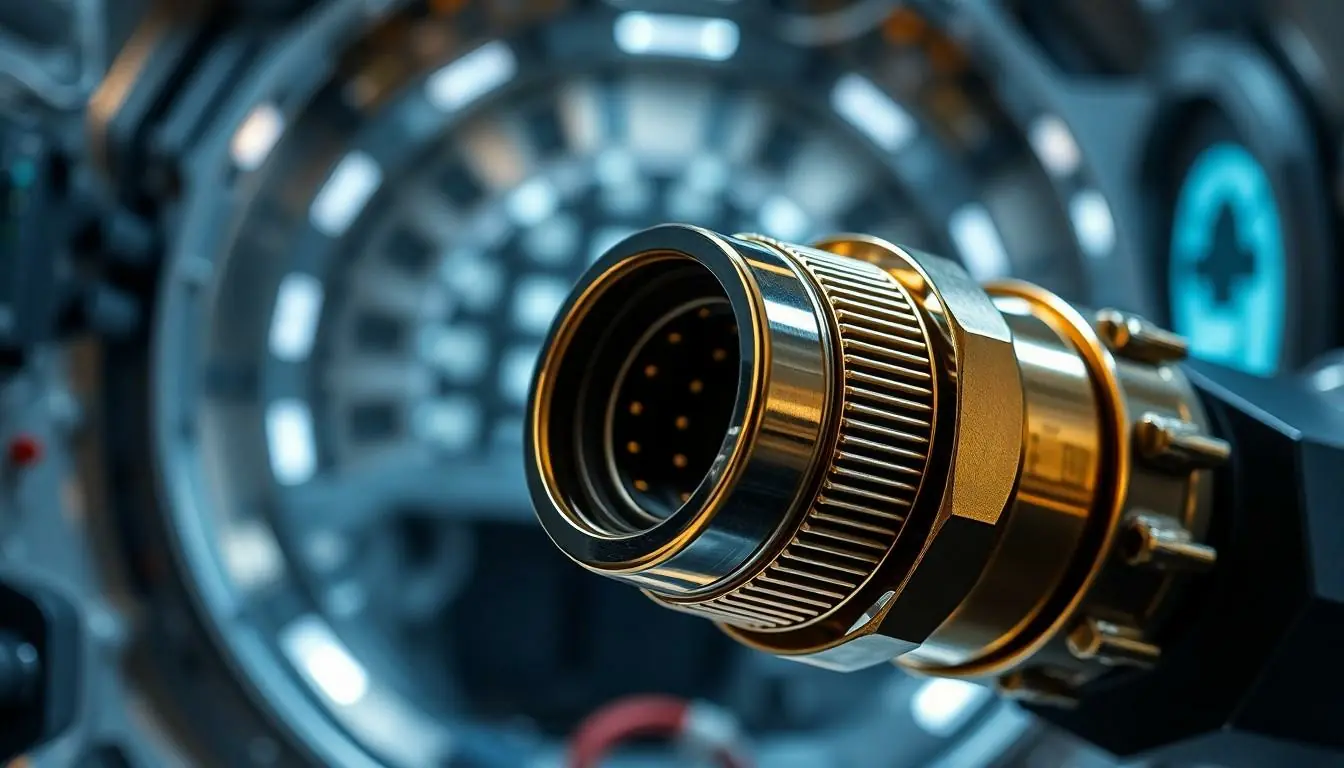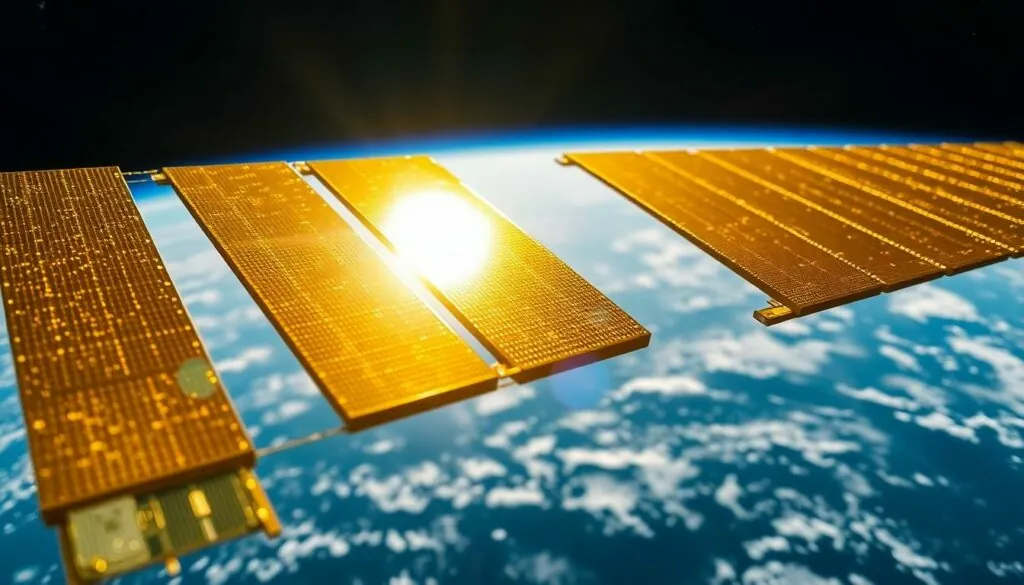Table of Contents
ToggleWhen it comes to space, gold isn’t just for bling; it’s a superstar in technology. Picture this: astronauts floating in zero gravity, their gadgets shimmering with the allure of gold. But why this shiny metal? It turns out gold’s got some serious skills that make it a must-have in the cosmos.
Gold’s unique properties, like its resistance to corrosion and excellent conductivity, make it the perfect partner for the harsh environment of space. It’s like the superhero of materials, ready to tackle extreme temperatures and radiation. So the next time you gaze up at the stars, remember that those twinkling satellites and advanced spacecraft are often wrapped in a little golden magic, proving that in space, it pays to be a little flashy.
Overview of Gold in Space Technology
Gold plays a crucial role in space technology due to its unique properties. Its exceptional conductivity and resistance to corrosion make it ideal for various applications in this field.
Properties of Gold
Gold boasts several noteworthy properties that enhance its functionality in space. It conducts electricity efficiently, ensuring reliable performance in electronic components. Resistance to tarnishing means it retains functionality over time, even in the harsh environment of space. Additionally, gold reflects infrared radiation, which helps regulate temperatures in spacecraft and satellites. This reflects the adaptability and reliability of gold when protecting sensitive equipment.
Historical Use in Space Exploration
Historically, gold has served vital roles in space exploration. NASA first utilized gold in the 1960s, coating astronaut visors to reduce sun glare while ensuring visibility. Over the years, spacecraft and satellites have incorporated gold-plated conductors for reliable signal transmission. Satellites such as the Hubble Space Telescope utilize gold layers in their mirrors, enhancing optical performance. As technology advances, the versatility of gold ensures its continued importance in future space missions.
Conductivity and Efficiency

Gold’s unique properties enhance efficiency in space technology, significantly contributing to thermal management and electrical systems.
Thermal Conductivity
Thermal conductivity plays a vital role in maintaining the right temperature in space equipment. Gold effectively dissipates heat by transferring it away from critical components. This ability prevents overheating, ensuring that instruments operate within their specified ranges. Spacecraft experience extreme temperature fluctuations, making gold’s high thermal conductivity invaluable. Additionally, gold’s reflective quality reduces heat absorption from solar radiation, further stabilizing temperatures. These characteristics ensure that sensitive equipment remains functional over long missions.
Electrical Conductivity
Electrical conductivity is another reason for gold’s application in space technology. Gold conducts electricity exceptionally well, reducing energy loss in electronic components. This quality ensures that signals transmit efficiently, vital for communication systems. Spacecraft equipped with gold-plated connectors experience lower resistance, enhancing overall performance. Historically, gold has been essential in satellite designs and other technologies, contributing to their reliability and longevity in the harsh environment of space. Uniquely, these attributes allow for optimal functionality across various space missions, making gold a preferred choice for critical electronic systems.
Durability and Resistance
Gold’s durability and resistance make it invaluable in space technology. These qualities contribute significantly to its effectiveness in harsh space conditions.
Corrosion Resistance
Gold exhibits exceptional corrosion resistance, ensuring that components remain functional over time. This characteristic protects equipment against oxidation and degradation that can occur in the harsh space environment. With exposure to elements like oxygen and moisture minimized, gold maintains its integrity and performance. Spacecraft encounter various corrosive materials, so using gold prevents potential failures. Additionally, gold’s inertness makes it suitable for long-term missions where reliability is critical.
Wear Resistance
Gold demonstrates impressive wear resistance, allowing it to withstand constant exposure to friction and thermal cycling. This resistance is crucial for components that experience mechanical stress, as it reduces the likelihood of damage and extends the lifespan of equipment. When parts move against each other, gold minimizes wear, ensuring smooth operation. Its durability is beneficial for connections and contacts in electronic systems, which require longevity and reliability. Without wear-related failure, mission success becomes more attainable, underscoring gold’s essential role in space technology.
Applications in Spacecraft
Gold plays a critical role in various spacecraft applications. Its unique properties support the functionality and longevity of essential components.
Spacecraft Components
Gold enhances the performance of multiple spacecraft components. Coatings of gold are utilized on connectors to ensure reliable electrical conductivity. Connections benefit from gold’s corrosion resistance, maintaining functionality over time. Heat dissipates efficiently via gold-plated surfaces, essential for equipment operating under extreme conditions. Additionally, gold shields sensitive instruments from radiation, protecting them from harmful effects. Gold layers effectively minimize wear and tear in components that frequently move or experience thermal cycling, contributing to overall mission success.
Satellite Technology
Gold is integral to satellite technology. Reflective coatings reduce heat absorption from solar radiation, ensuring stable operational temperatures. Components in satellites often feature gold-plated conductors to optimize signal transmission in communication systems. The durability of gold ensures reliable performance over extended periods, even in harsh environments. Various satellites, including the Hubble Space Telescope, utilize gold to enhance their optical capabilities. Designing satellites with gold materials maximizes efficiency, contributing to improved imaging and data collection.
Future Trends in Gold Usage
The future of gold in space technology continues to evolve as advancements occur. Innovative applications and research into its properties will further enhance its role in outer space.
Advancements in Space Technology
Emerging technologies focus on improving the efficiency of gold’s usage in space. Scientists are exploring nano-scale gold applications to create lightweight components. Lightweight designs conserve fuel and make space missions more sustainable. Enhanced methods for applying gold coatings on materials are also being developed. These new techniques could maximize gold’s reflective properties for thermal regulation. Moreover, the integration of gold in advanced communication systems promises quicker transmission rates. Future spacecraft will likely rely on these upgrades to meet increasing data transfer demands. Continued investment in research will undoubtedly unveil new possibilities for gold in space exploration.
Alternatives to Gold
While gold remains prominent, various alternatives are being considered in aerospace applications. Platinum, for instance, offers similar corrosion resistance and conductivity but at a higher cost. Indium and aluminum provide good thermal conductivity while being lighter options. Additionally, conductive polymers show promise as flexible materials, potentially reducing reliance on metals. Research into these alternatives is ongoing, focusing on improving performance and durability in space environments. Technological developments could lead to the adoption of these materials in future missions. As these alternatives gain traction, the landscape of space technology may shift, allowing for more cost-effective and efficient solutions.
Gold’s unique properties make it an indispensable asset in space technology. Its corrosion resistance and excellent conductivity ensure that critical components function reliably in the extreme conditions of space. The material’s ability to reflect infrared radiation plays a crucial role in regulating temperatures, protecting sensitive instruments from harsh environments.
As advancements continue, gold’s applications are expanding, with research into innovative uses that promise to enhance efficiency and sustainability in future missions. While alternatives are being explored, gold’s durability and performance keep it at the forefront of aerospace technology. Its presence in spacecraft and satellites not only underscores its functional value but also highlights its enduring significance in the quest for exploration beyond our planet.





